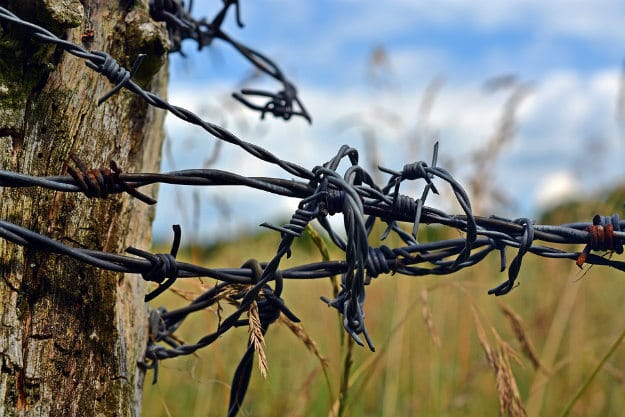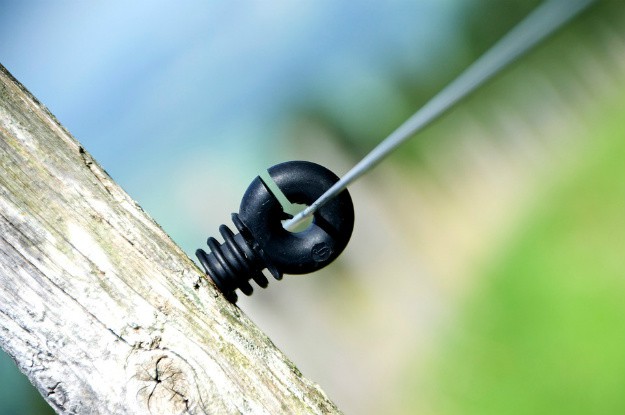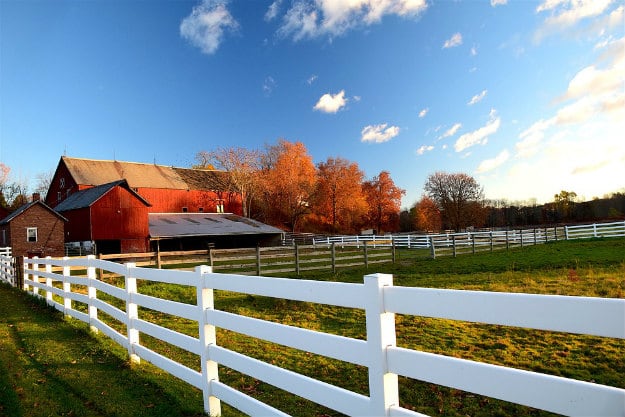Perhaps the most undervalued addition to any successful homestead, the right type of fence can not only provide security from unwelcome predators, but it can also add value and security to your land, ensuring that your homestead thrives and survives as long as possible.
Choosing the Right Fence For Your Homestead
Selecting what type of fence your homestead needs can be quite a challenge. There’s much to consider; what type of livestock you’re cultivating, how wide your space is, and the terrain of your land are all factors to take into consideration when selecting a type of fence for your property. Here, we’ll take a look at the pros and cons of various types of fencing approaches, and this will help you in making a selection for the perfect fencing option for your home.
Woven-wire fence:
This approach alternates between metal posts and wooden T-posts spaced 12 to 16 feet apart. It should be noted that this type of fencing will cost approximately $1,500 per quarter mile. This set-up also demands usually about 40 hours of labor to execute the entire installation.
Some positive contributions that this type of fencing will provide are that it is a strong and sturdy source of security. It is a relatively attractive option and quite commonly seen on homesteads; additionally, it confines almost all types of livestock, even bigger animals such as sheep and goats.
However, it is worthy considering that this type of fencing is the highest in cost, and it also requires the most maintenance upkeep and installation. Perhaps the most time-consuming part of the installation process involves digging up the postholes, which is the majority of time spent in the estimated 40 hours of labor. However, T-posts do not resist the pull of a tight fence wire, and can hold upright without compromising the strength of your fence.
Barbed-wire fence:
Just shy of the estimate price of the woven-wire, barbed-wire fence installation averages at approximately $1,100 per quarter mile, also alternating between metal posts and wooden T-posts. As noted, it is obviously less expensive (and lighter!) to install than a woven-wire fence, and it provides the greatest deterrent to cattle who will not attempt to push down a barbed wire fence.

The downsides to this type of fencing is that it often produces an aggressive appearance which can come off as making your homestead appear unwelcoming, and it can be dangerous for young children and less assuming animals such as sheep and goats.
It does employ the same type of post arrangement as a woven-wire fence, but requires far less maintenance and upkeep after installation, as you are note required to handle large rolls of woven wire. Additionally, barbed wire is much easier to install over rolling terrain, as the wire follows the land’s contour.
High-Tensile Electric Fence:
This type of fencing costs approximately $700 per quarter mile, and requires about 20 hours of labor. A high-tensile approach is clearly the least expensive and requires the shortest amount of time dedicated to installation, as well as a low annual cost of ownership.
Additionally, this type of fence typically generates good containment performance for almost all livestock breeds. As a downside, this fence is the most technically complex and requires regular monitoring; also, if it is not properly protected it can be ruined by a lightning strike, which is another potential danger for animals and people alike.

Most homesteaders, however, consider high-tensile an ideal choice. Its installation process is similar to non-electric fences, and it is easily the cheapest option that requires the lowest amount of upkeep and maintenance. This type of fence will require an energizer, which typically costs around $200, and will also require ground rods that will work to complete the circuit, giving the fence its effective electric shock.
Lightweight Poly Wire Fence:
This installation process will estimate at about $200 per quarter mile and requires no more than two hours of labor. Although it is an easy and inexpensive approach, as well as flexible with movement, it is not an ideal solution to containing large livestock, so this fencing type will be more suitable for vegetation and gardens. This type of fencing is generally positioned too low to the ground to ensure that cattle and larger animals are kept enclosed in the area; however, they might suit for internal grazing purposes, as they can be lifted and easily moved for temporary fencing needs, such as feeding. If a poly fencing system is combined with a high-tensile system, a second energizer will not need to be purchased as the first will suffice.
Additional information that you will need to consider is the durability and sustainability of wooden versus plastic posts. Read on to learn more about the benefits of each type, and which material is suitable for the types of fences listed.
Wooden posts –
These are inexpensive and easy to find in forested regions. They’re also lightweight and allow for the homesteader to practice drilling, nailing, and stapling. However, wooden posts are susceptible to rot and locust infestations which will eventually lead to the demise and necessary replacement of wooden posts.
Plastic posts –
These can be cut and worked the same way as wood. As a downside, they are generally more expensive than wooden posts and are also not as strong or rigid. Unfortunately, many homesteaders have been disappointed with their plastic posts failing to remain straight upright.

There can be lots to consider when choosing the right type of fence for your unique homestead, such as material, approximate cost, and mobility of the fencing approach. The pros and cons of these various fencing types will surely help you narrow your selection, and most importantly ensure that both your crops and your cattle are kept safe and secure.

Re-title this article… it should be, Basic Fencing For Third Graders !